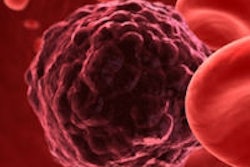The precise targeting and limited dosing of radiation via proton therapy can reduce treatment side effects among head and neck cancer (HNC) patients, according to a new study of pediatric patients presented this week at the American Society for Radiation Oncology annual meeting in Atlanta.
Children are especially susceptible to the side effects of radiation therapy, and treating them for head and neck cancers poses an additional challenge due to the risk of radiation to developing tissues, noted the study authors, from the Perelman School of Medicine at the University of Pennsylvania and the Children's Hospital of Philadelphia.
They found that using proton therapy for young patients yielded milder side effects than are typically seen among children undergoing conventional radiation. This could mean fewer late effects as they survive their cancer.
The study sought to add to limited data about the approach by following a group of 25 patients, ranging in age from 1 to 21 years, all of whom received proton therapy at Penn Medicine's Roberts Proton Therapy as part of their treatment for various head and neck cancers, including rhabdomyosarcoma, Ewing's sarcoma, and salivary gland tumors, among others. Treatment toxicity was evaluated every week during proton treatment and every one to three months thereafter.
After a median of 13 months after treatment, 19 patients (76%) have no evidence of disease, 3 patients (12%) had developed local recurrence, and 5 (20%) had tumors that seemed to be stable. One patient died of their cancer. These outcomes are generally equivalent to those that would be expected with more traditional x-ray therapy, the researchers noted.
More significant, however, were the greatly reduced side effects observed in the study, compared with the prevalence seen among head and neck cancer patients undergoing x-ray treatment. The side effects were "really very mild, with basically no high-grade toxicity," explained lead author Christine Hill-Kayser, MD, an assistant professor of radiation oncology in Penn's Abramson Cancer Center.
The most common side effects were fatigue and dermatitis. While skin reactions are often seen during radiation treatment, this study seemed to indicate a somewhat greater reaction than expected when proton treatment was followed by certain chemotherapies, including actinomycin D and doxorubicin, which can interact with radiation and cause radiation sensitivity. That finding helped the research team refine their approach to minimize that side effect.
"If we started those drugs right away after proton therapy, it seemed the dermatitis was worse," Dr. Hill-Kayser said. "So we learned that after proton therapy, we wanted to hold those drugs and not give them for a month to six weeks, so the patient had time to recover from the skin toxicity before it got worse."
Weight loss and nutritional problems were only a mild concern for the patients in the current study. Few patients lost more than 10% of their body weight during the course of treatment. Weight loss was minimized with a gastrostomy tube, but it was still manageable without it, likely because the radiation dose to the mouth and throat was less than equivalent plans using x-ray therapy.



















